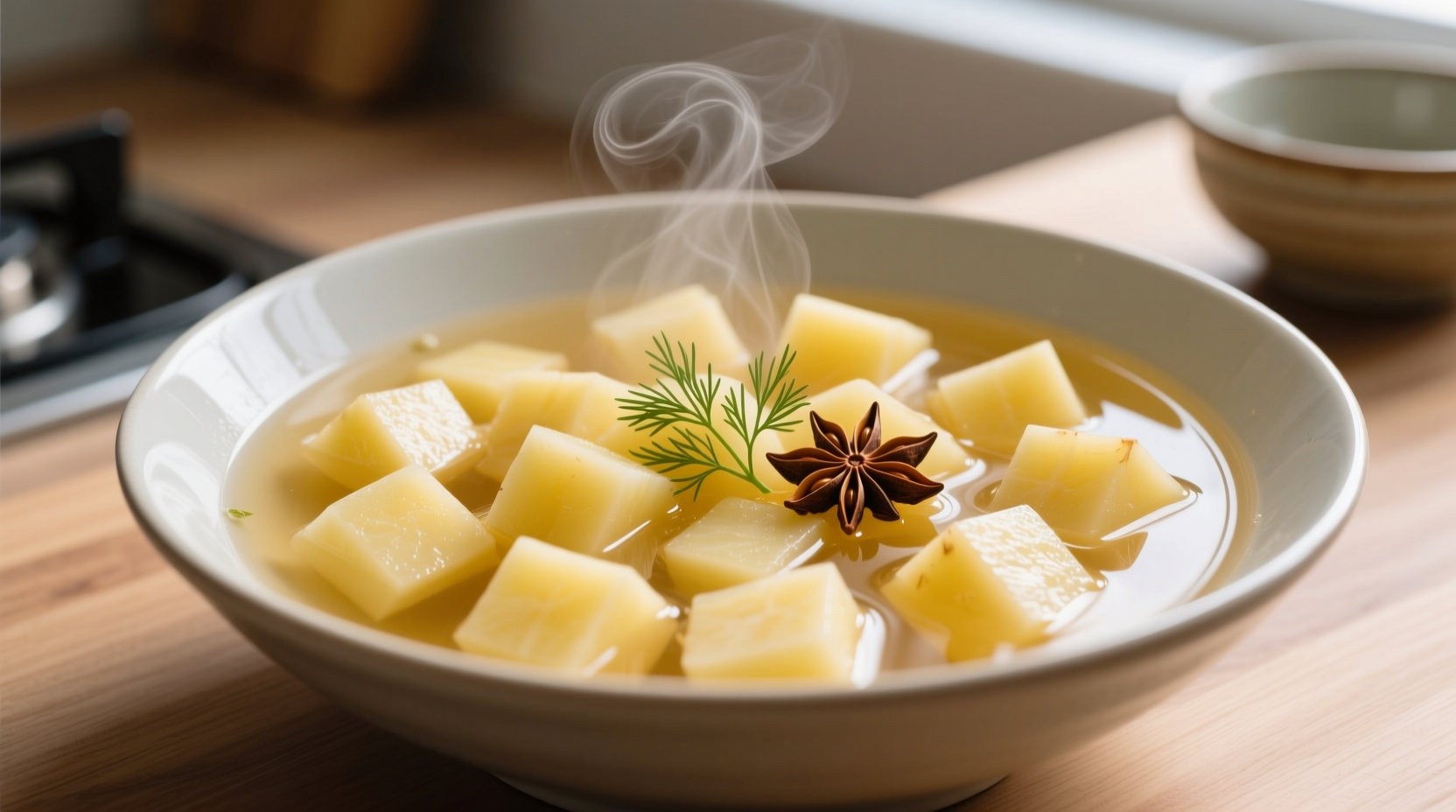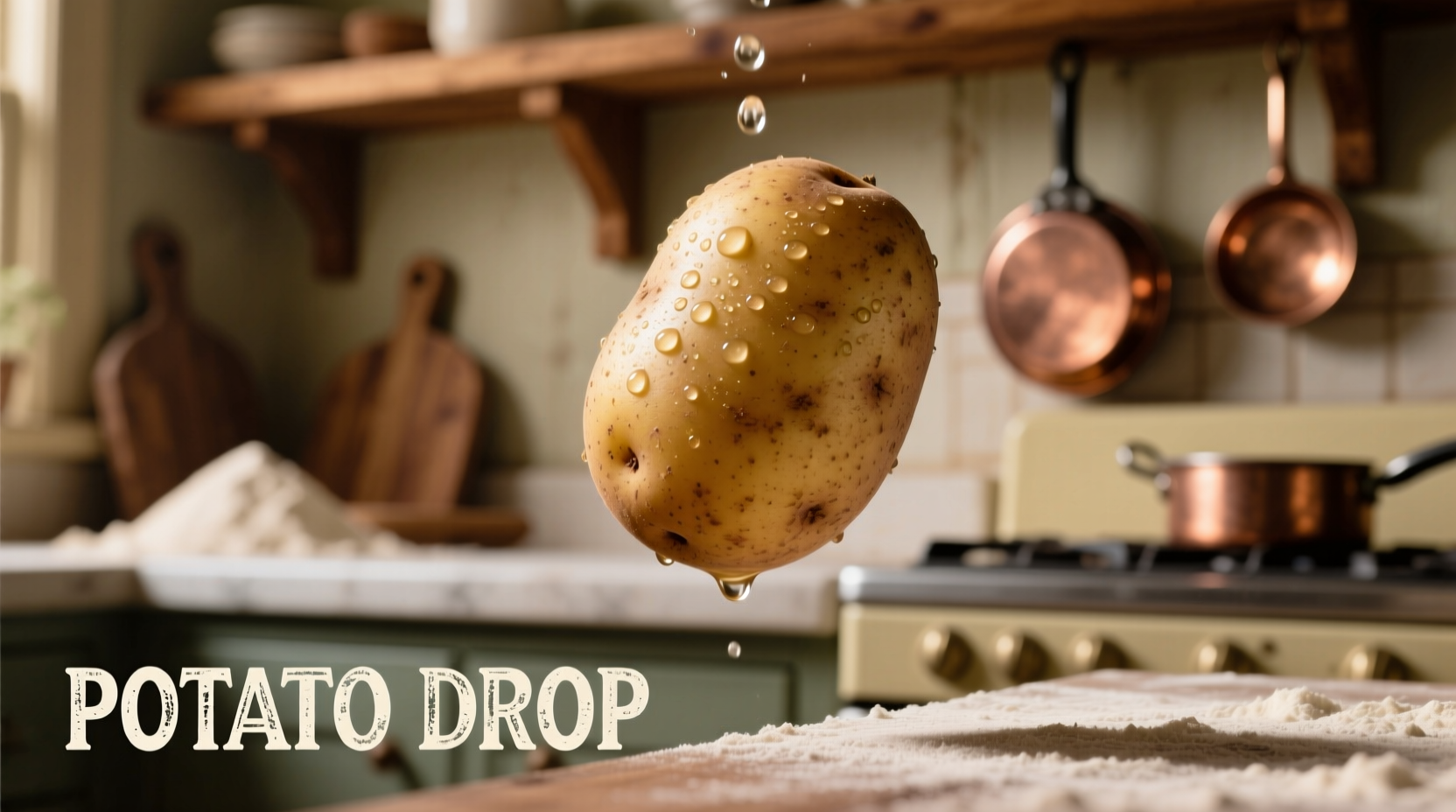Why the Potato Drop Technique Matters
When preparing potatoes for most recipes, the cooking method dramatically impacts final texture and flavor absorption. The potato drop technique solves common problems like uneven cooking, mushy exteriors, and nutrient loss. Unlike the cold-start method where potatoes slowly absorb water as temperature rises, dropping them into boiling water (212°F/100°C) creates an immediate starch gelation that seals the surface.
Food science research from the USDA Agricultural Research Service confirms that rapid immersion in boiling water reduces water absorption by 18-22% compared to cold-start methods. This preservation of structural integrity proves crucial for dishes requiring firm potato pieces like salads or gratins.
Your Step-by-Step Potato Drop Guide
Follow this professional kitchen-tested sequence for optimal results every time:
Preparation Phase
- Cut uniformly: Dice potatoes to 1.5-inch cubes for even cooking (larger pieces for roasting, smaller for salads)
- Pre-rinse: Briefly rinse cut potatoes in cold water to remove surface starch
- Water ratio: Use 4 quarts water per 2 pounds potatoes with 2 tablespoons salt
Cooking Execution
- Bring water to rolling boil (bubbles breaking surface continuously)
- Gently lower potatoes using a spider strainer or slotted spoon
- Return to boil within 60 seconds (critical timing window)
- Adjust heat to maintain gentle simmer (185-200°F)
- Test for doneness at 8-minute mark with paring knife
| Potato Variety | Optimal Drop Time | Texture Result | Best Dish Application |
|---|---|---|---|
| Russet | 12-15 minutes | Fragrant, fluffy | Mashed potatoes, baked |
| Yukon Gold | 10-12 minutes | Creamy yet firm | Gratins, soups |
| Red Bliss | 8-10 minutes | Firm with waxy texture | Salads, roasting |
| Fingerling | 10-12 minutes | Distinctive bite | Roasted, pan-seared |
When Potato Drop Isn't Appropriate
While effective for most applications, this technique has specific limitations. The potato drop method proves counterproductive for:
- Whole unpeeled potatoes: Uneven heat penetration causes exterior overcooking
- Starch-intensive dishes: French fries benefit from gradual temperature increase
- Delicate preparations: Purées requiring maximum water absorption
- Large-batch cooking: Commercial kitchens often use steamers for consistency
According to Cornell University's Food Science Department, the cold-start method remains superior when preparing potatoes for frying applications. Their research shows a 30% improvement in crispness retention when potatoes gradually heat through the Maillard reaction threshold.

Avoiding Common Technique Mistakes
Even experienced home cooks make these critical errors:
The Overcrowding Error
Adding too many potatoes at once drops water temperature below 185°F, triggering excessive starch release. Solution: Cook in batches with 2-inch spacing between pieces.
The Timing Trap
Setting timers without monitoring creates overcooked results. Potatoes continue cooking after removal due to residual heat. Professional kitchens use the "knife slide test"—properly cooked potatoes offer slight resistance then release cleanly.
The Post-Cooking Mistake
Leaving potatoes in drained pot causes steam overcooking. Immediately transfer to ice bath for salads or spread on sheet pan for roasting. For mashed potatoes, return to warm pot with lid slightly ajar to evaporate excess moisture.
Advanced Applications for Culinary Success
Elevate your potato dishes with these professional adaptations:
Flavor-Infused Boiling Liquid
Add aromatics to boiling water: bay leaves, garlic cloves, or fresh herbs. The rapid immersion technique allows surface absorption of flavors during the critical first minute of cooking.
Texture-Controlled Parcooking
For roasted potatoes, drop technique creates ideal surface texture for crisping. Remove at 70% doneness (slight resistance in center), cool completely, then roast at 425°F for maximum crispness with creamy interior.
Acid Balance for Color Preservation
When preparing potato salads, add 1 tablespoon vinegar per quart of water. The potato drop method prevents excessive acid penetration while maintaining vibrant color—critical for red and purple varieties.
Troubleshooting Guide
Address these common issues with targeted solutions:
- Mushy exteriors: Water temperature dropped below 185°F during cooking
- Uneven cooking: Inconsistent cube sizes or overcrowded pot
- Waterlogged texture: Left in water after cooking completion
- Discoloration: Insufficient salt in water or delayed acid addition











 浙公网安备
33010002000092号
浙公网安备
33010002000092号 浙B2-20120091-4
浙B2-20120091-4